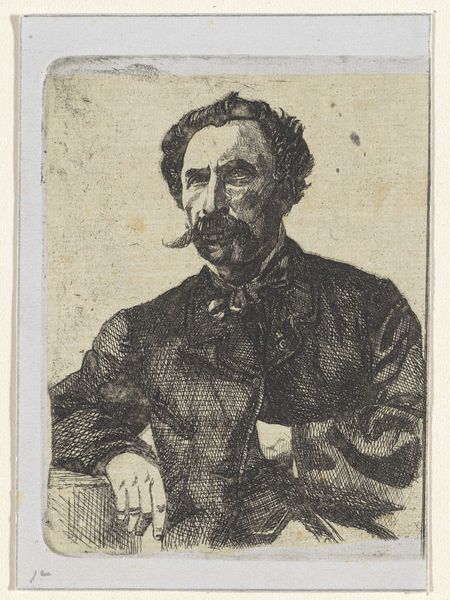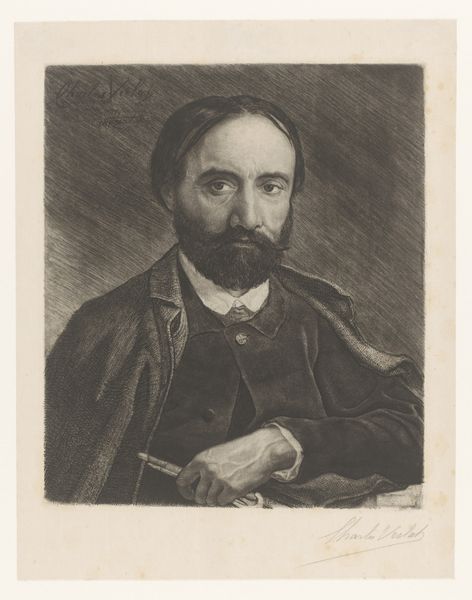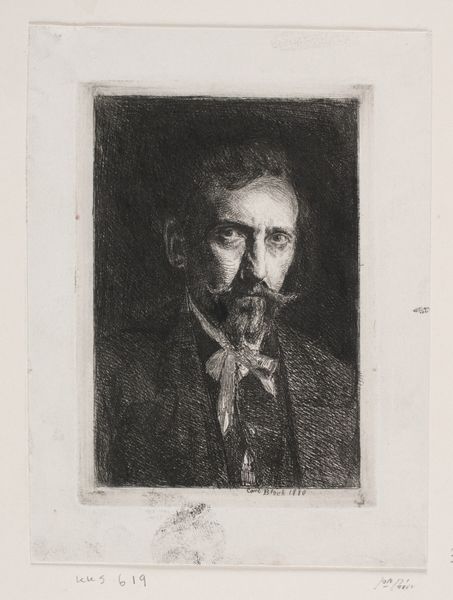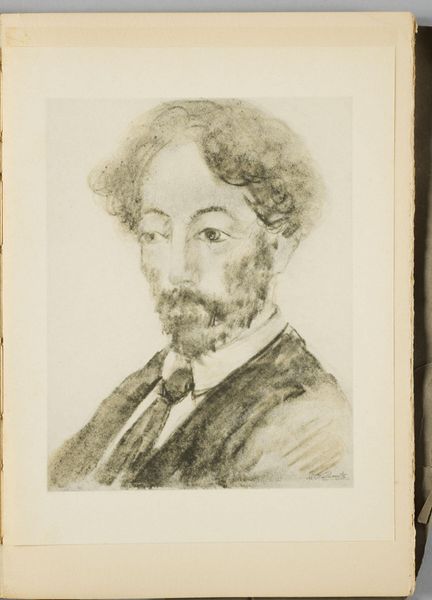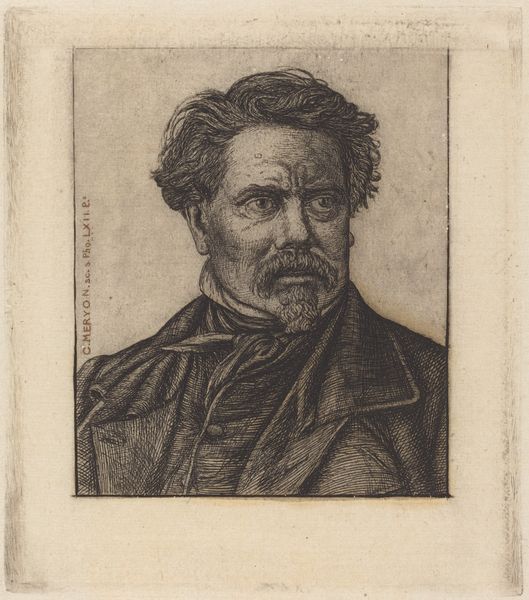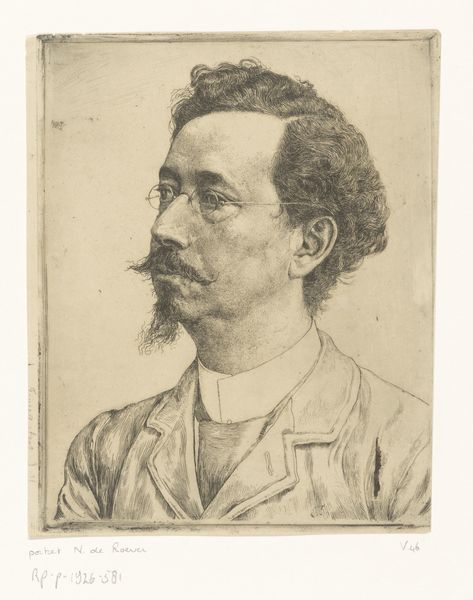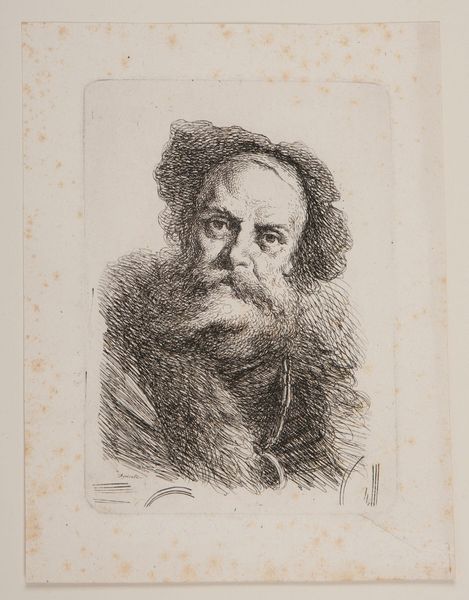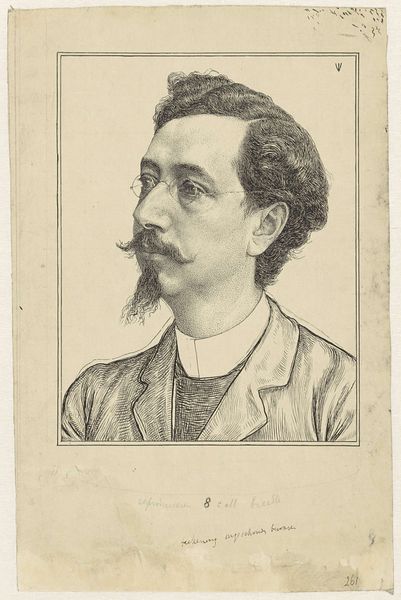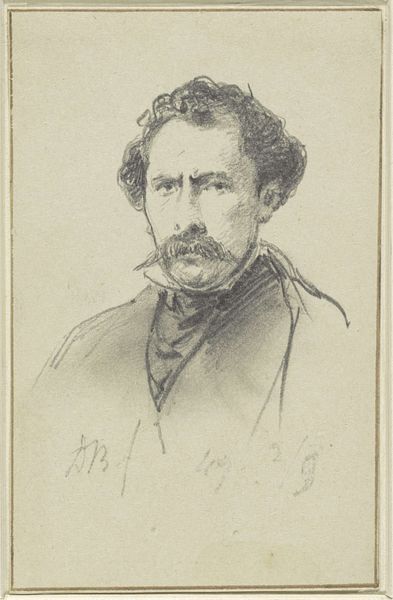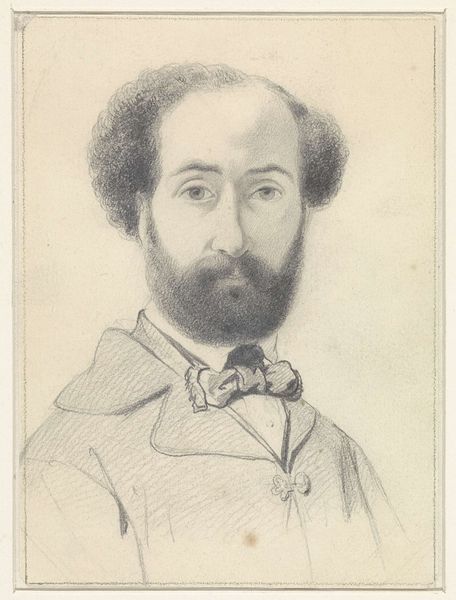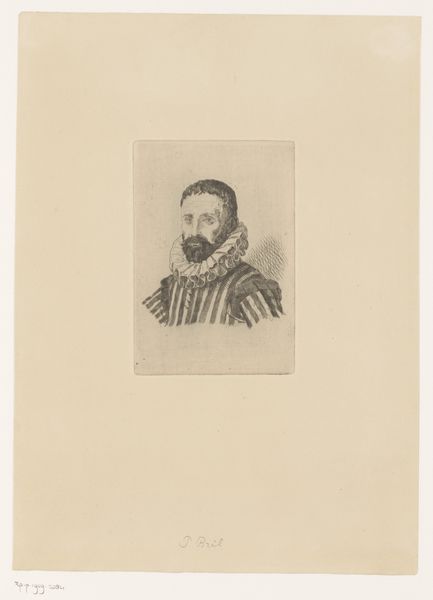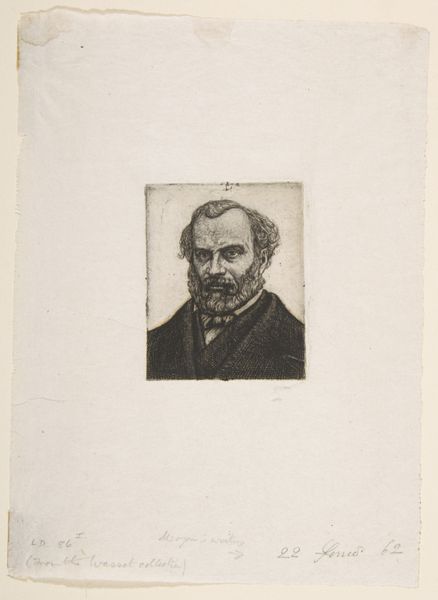
print, etching
#
portrait
# print
#
etching
#
realism
Dimensions: height 87 mm, width 85 mm
Copyright: Rijks Museum: Open Domain
Curator: Editor: Here we have Frederik Hendrik Weissenbruch's "Portrait of Samuel Verveer," an etching from 1863. I find the details in the suit and especially in the face striking for a print. What captures your attention most about this piece? Curator: For me, it's the materiality of the etching process itself that speaks volumes. Consider the labor involved in creating this image. The artist meticulously scratched away at the metal plate. Editor: So, you are focusing on the method and craft behind the work? Curator: Precisely! Think about who had access to the materials and the skills to produce such prints. The creation of multiple prints democratized art. It moved portraits like this outside of just the elite sphere of painted commissions. Editor: I didn't consider how the printmaking process allowed the artwork to be reproduced for more people to consume, allowing for broader consumption. Was this process seen as less valuable than painting? Curator: That’s an insightful question. Etching was often seen as secondary to painting but offered a different kind of value through its reproducibility. This challenges our traditional art historical focus on singular "masterpieces" by exploring mass production, the distribution of images, and how those factors shape our perceptions of art. Editor: It’s amazing to see how considering the materiality of a piece can shift our understanding of its artistic and cultural significance. I will remember to consider this approach from now on! Curator: Exactly. Seeing the process allows us to examine the art in relation to labour, production, and social context. It enriches our engagement and gives new perspectives!
Comments
No comments
Be the first to comment and join the conversation on the ultimate creative platform.
